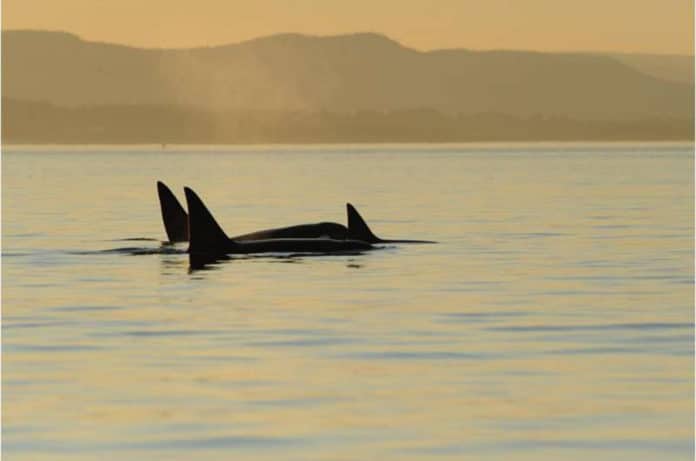Animals almost always continue to reproduce until they die. There are just three exceptions to lose this ability. Humans, killer whales, and pilot whales are the three mammals that undergo menopause.
Killer whales are a diverse species made up of multiple separate ecotypes (different types within a species) across the world’s oceans that differ in their prey specialization and patterns of social behavior. A study has suggested that menopause has evolved independently across different whale species.
Previous studies have found menopause in an ecotype called ‘resident’ killer whales. These killer whales have a social structure that favors grandmothering.
In a new study, scientists from the University of Exeter observed an ecotype of killer whales with a different social structure. In this type, the offspring is likely to leave their mother.
It was found that both killer whales go through menopause in a strikingly similar way.
Lead author Mia Lybkær Kronborg Nielsen of the University of Exeter said, “Previous research on the evolution of menopause has focussed on resident killer whales, where both males and females usually stay in the social group into which they were born. As a result, females become increasingly genetically related to the other members of the group as they age.”
“At birth, their father is not in their family group. Their relatedness to males in the group is comparatively low. Still, by later life, many group members are their children or grandchildren, increasing their average relatedness to the group. The new study looks at Bigg’s killer whales, which may leave their birth group around the time of maturity.”
For the study, scientists used more than 40 years of data on Biggs and resident whales. The data tell them about a similar pattern of postreproductive life for females—accounting for more than 30% of adult years.
Professor Darren Croft, of the University of Exeter, said, “These different whale populations both shows increased female relatedness with age, but—as this is stronger in resident than Bigg’s killer whales—it’s not immediately clear why the age at menopause and the length of the postreproductive lifespan seem to be the same in both.”
“Based on theory, we would expect the effect to be stronger in resident killer whales. Further research using drones to study how grandmother killer whales help their offspring and grand-offspring in the different populations will allow us to investigate this, and in doing so learn more about how menopause evolved in whales and humans.”
Thomas Doniol-Valcroze and Jared Towers of DFO Canada said, “this study highlights the value of long-term population studies in which individuals are documented throughout their lives. Not only do the results contribute to a better understanding of animal evolution, but they also have significant implications for conservation by shedding light on the importance of social structure for the recovery of these populations.”
Journal Reference:
- Mia Lybkær Kronborg Nielsen et al., A long postreproductive life span is a shared trait among genetically distinct killer whale populations, Ecology, and Evolution (2021). DOI: 10.1002/ece3.7756
